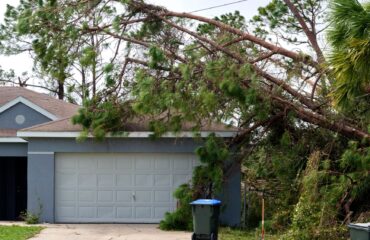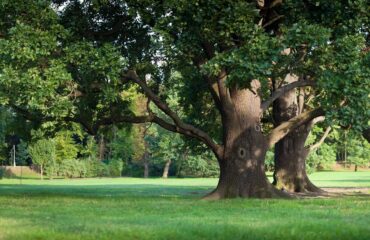
Archer Tree Services Shares Their Insights
Maintaining the health and aesthetics of your trees requires careful consideration of when the best time to trim trees is and how. The timing of tree trimming can significantly impact the overall well-being of your green companions. There’s no better time to delve into the factors that influence the best time to trim trees and gain insights that cater to various tree types and regional climates. Whether you’re aiming to enhance the beauty of your landscape, mitigate potential risks, or foster healthy growth, understanding the optimal times for tree trimming is crucial for success.
When it comes to tree care expertise, Archer Tree Services stands out as your trusted partner in ensuring the well-being of your trees. With years of experience and a team of skilled arborists, we specialize in providing tailored solutions for tree trimming that align with the unique needs of your trees. Our commitment to preserving tree health and promoting safety sets us apart. We understand that each tree is different, and our professionals are equipped to assess and address specific requirements, ensuring the best outcomes for your trees and your property.
At Archer Tree Services, we offer comprehensive tree trimming services in Sandersville, Greensboro, and Milledgeville, GA designed to meet your goals and exceed your expectations. Whether you seek seasonal pruning for aesthetic purposes, hazard reduction, or overall tree care, our team is dedicated to delivering top-notch service. Explore our blog to gain valuable insights into the best time to trim trees and discover how Archer Tree Services can contribute to the well-being of your arborous companions. Your trees deserve the best care, and we’re here to provide it.
The Top Reasons to Trim Trees: Health, Safety, and Aesthetics
Proper tree pruning is an essential aspect of tree care. People trim trees for various reasons, primarily revolving around health, safety, and aesthetics.
Health
Ensuring the health of trees is of utmost importance. Trimming plays a vital role in removing diseased or insect-infested branches, preventing the spread of tree diseases, and enhancing air circulation, all of which contribute to overall tree health.
Benefits of trimming include the elimination of dead or diseased branches, reducing disease transmission, and the risk of falling branches. Pruning also aids in controlling insect infestations by removing affected branches. Moreover, strategic pruning stimulates new growth, fostering the tree’s overall health and vitality.
Thinning the canopy allows more sunlight to penetrate the lower branches and surrounding plants, promoting a healthier ecosystem. This practice is particularly beneficial for fruit trees, as it improves sunlight penetration and air circulation, ultimately leading to better fruit production.
Additionally, young trees benefit from pruning to establish a strong and well-balanced structure as they continue to grow. By optimizing the pruning practices, we can ensure the long-term health and well-being of our trees.
Safety
Trimming trees is not only important for the overall safety but also for the well-being of people and property. When branches become overgrown, diseased, or dead, they can pose a significant risk, especially during high winds or storms. Regular and proper trimming helps to mitigate these risks effectively.
Thinning out branches has the added benefit of reducing the risk of wind or storm damage. By allowing better air circulation through the canopy, the chances of branches breaking during storms are minimized. This is achieved by reducing wind resistance through proper pruning techniques.
Moreover, trimming is also essential to provide clearance for structures, power lines, roads, and other nearby objects. By ensuring adequate clearance, potential hazards are minimized, and safety is enhanced.
Aesthetics
A well-pruned tree not only enhances the overall beauty of a landscape but also contributes to its visual appeal. By carefully shaping and controlling the growth of the tree, it allows for a harmonious integration with its surroundings. Moreover, proper pruning promotes the healthy development of flowers or fruits, adding an exquisite touch to the tree’s aesthetic value.
Trimming is also performed to preserve scenic views. By selectively removing branches or foliage, scenic vistas can be maintained while keeping the tree intact and healthy.
It’s important to note that improper pruning can harm a tree. Consulting with a professional arborist, like those at Archer Tree Services, can provide specific guidance and services tailored to the unique characteristics of each tree.
When you entrust your trees to Archer Tree Services, you can rest assured that every aspect of their care will be expertly handled. Our team is dedicated to ensuring the health, safety, and exquisite beauty of your trees, paying attention to even the smallest details to create a truly remarkable landscape.
Archer Tree Services’ Insights: The Best Time to Trim a Tree
When looking at the best time of year to trim trees, it largely depends on the tree species and your geographical location. It’s important to consider the specific requirements of your tree species, as optimal pruning times may differ. In regions with distinct seasons, late winter or early spring pruning is customary. This aligns with the dormant phase, minimizing tree stress. In warmer climates where trees may not fully enter dormancy, pruning can often be done during cooler months.
Pruning during extreme weather conditions, such as excessively hot or dry periods, can strain the tree. It is generally advisable to avoid pruning during these times. However, dead or damaged branches can be removed at any time throughout the year.
Here are some general guidelines:
Deciduous Trees: These tree types, which shed their leaves annually, are best pruned in late winter or early spring while they’re still dormant. This timing encourages springtime growth and ensures that the pruning doesn’t interfere with the tree’s leaf production later in the year.
Evergreen Trees: Evergreen trees can be trimmed at any time of the year, although it’s typically best to do so in late winter or early spring, like deciduous trees. Pruning during this time promotes healthy growth and helps maintain the tree’s desired shape throughout the year.
Fruit Trees: To enhance fruit production, the best time of year to trim trees of this type is late in winter before new growth starts, but after the worst of the winter cold has passed. This allows the tree to focus its energy on producing fruit rather than growing new branches and leaves.
Flowering Trees: If the tree blooms on new growth, prune in late winter or early spring. For trees that flower on last year’s wood, prune them as soon as their flowers fade. This is the best time to trim trees that flower because it ensures that the tree has enough time to develop new growth for the next blooming season.
Palm Trees: In warmer regions where palms are prevalent, they should be pruned anytime from late spring to early summer to remove dead fronds and promote growth. Pruning during this time also helps prevent any potential damage to the tree during colder months.
Oak Trees: To prevent the spread of disease, such as oak wilt, oaks should be pruned during their dormant period in late winter. This is the best time to trim trees of this type because it reduces the risk of infection and allows the tree to heal properly before the active growing season.
Maple Trees: Trim maple trees in late winter or early spring before the sap starts rising to prevent “bleeding” (sap oozing from the tree). Pruning during this time also minimizes stress on the tree and encourages healthy growth in the upcoming season.
Remember that these are general rules, and exceptions may apply. Additionally, the best time to prune trees for safety reasons or disease control is immediately, regardless of the season. Given the complexity of tree care, it’s recommended to contact a professional arborist, such as Archer Tree Services, for tailored advice and service.
You Can Trust That Archer Knows The Best Time to Trim Trees
Understanding the best time to trim trees involves taking into account the type of tree, the local climate, the tree’s health, and the specific goals of pruning. Properly timed pruning can lead to healthier, more productive trees and enhance the aesthetic value of your landscape. However, it’s crucial to remember that improper pruning techniques or timing can cause irreversible damage to the tree. Therefore, it’s always recommended to seek professional advice.
At Archer Tree Services, we understand that every tree is unique, and so are its pruning needs. Our team of professional arborists has the expertise to offer tailored advice based on your specific tree type, climate, and pruning goals. We also have the skills to carry out the pruning work efficiently and safely, ensuring the health and longevity of your trees.
So whether you have deciduous trees that need pruning in late winter, flowering trees that do best when pruned post-flowering, or you’re dealing with an ailing tree that requires immediate attention, you can rely on Archer Tree Services to know when the best time to trim trees is. We’re here to ensure that your trees receive the best care at the right time, helping them thrive and enhancing the beauty of your landscape.



